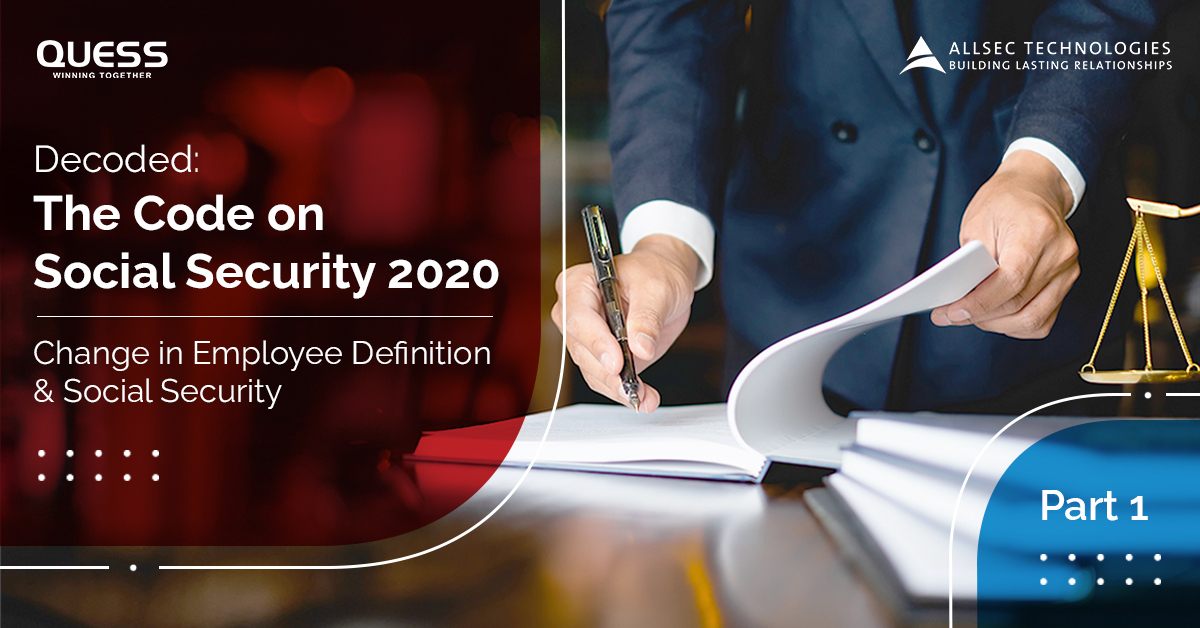
Decoded: The Code on Social Security, 2020 (Part 1)
India’s social security for employees is all set to get an overhaul due to the Code on Social Security, 2020. The new code consolidates nine national labour laws into a single code that will extend social security not only to full-time employees in the organized sector but also to those employed in the unorganized and gig economy.
In this blog, we break down the implications of the code, specifically concerning the change in who constitutes an employee, employment law, and how the new changes will impact benefits accruing to them.
Definition of Employee
Before the Code on Social Security, 2020, businesses in India had to comply with nine distinct labour laws that required certain benefits to be paid to employees in the organized sector alone.
The 2020 Code on Social Security has widened the definition of employees. Gig workers, platform workers and those employed in the unorganized sector now come under its ambit as well. The definition of an employee will now include workers hired through contractors, self-employed workers from other states as well as fixed-term workers. Social security will now be extended to gig, platform and unorganized workers, making them eligible for benefits such as a pension, gratuity, maternity benefits, etc. that were once the prerogative of organized-sector employees.
For businesses, this alteration means higher expenses for employee compensation. The cost of short-term contracts is also likely to increase. Given that the code attempts to distinguish among “gig”, “platform” or “unorganized” workers, there may be some ambiguity in classification.
Without clarity, organizations may have to take defining the role of employees into their own hands. For workers, while the long-term financial security bodes well, it could mean a deduction from the current in-hand remuneration.
Gratuity Eligibility
The Payment of Gratuity Act, 1972 specified that all organizations employing more than 10 persons would have to pay gratuity. Gratuity payments were due to all employees completing at least 5 years of continuous service with the companies.
While the new code has retained most of these provisions, its scope has been widened for fixed-term contract workers. Fixed-term contract employees will now be eligible to receive gratuity on a pro-rata basis. The threshold for working journalists eligible for gratuity has also been reduced from 5 years to 3 years.
This alteration to bring fixed-term contractors under the gratuity provisions, while positive for workers, could prove costly for employers and their compliance management efforts. Hiring contract workers for short-term projects is likely to become expensive. Gratuity payments for all workers could also stand to increase if the basic salary component is not 50% of the gross salary. Organizations will need to budget for these additional costs.
How should companies response
The focal point of the Code on Social Security 2020 is to improve the security benefits accrued to employees. Companies will need to re-evaluate the salary structures of employees to get a better understanding of the commercial, labour law compliance, as well as the legal impact of the code.
In the next part, we cover the implications of the code concerning ESI and EPF payments, the creation of a social security fund, and penalty charges.
To understand the impact of the code on your existing salary and compliance structure, reach out to us.


